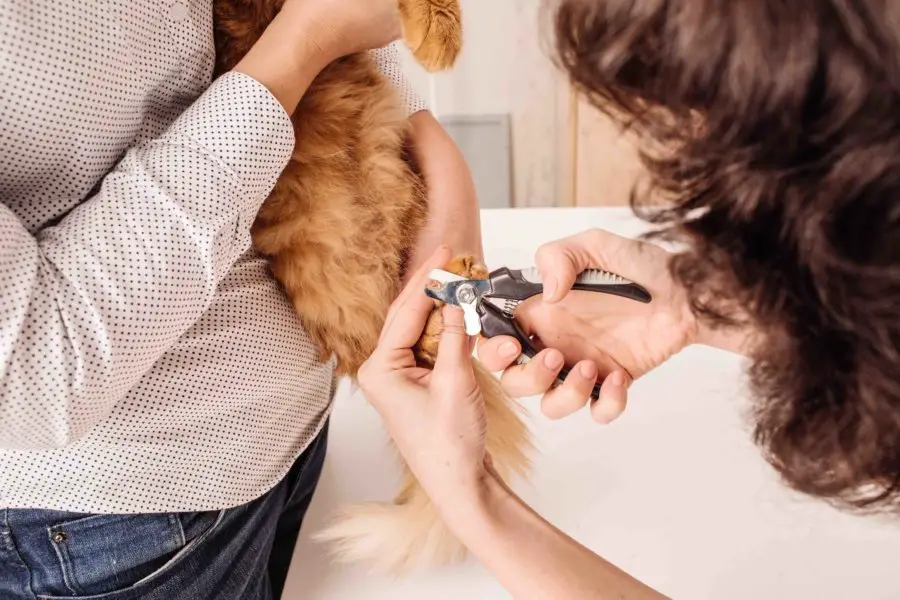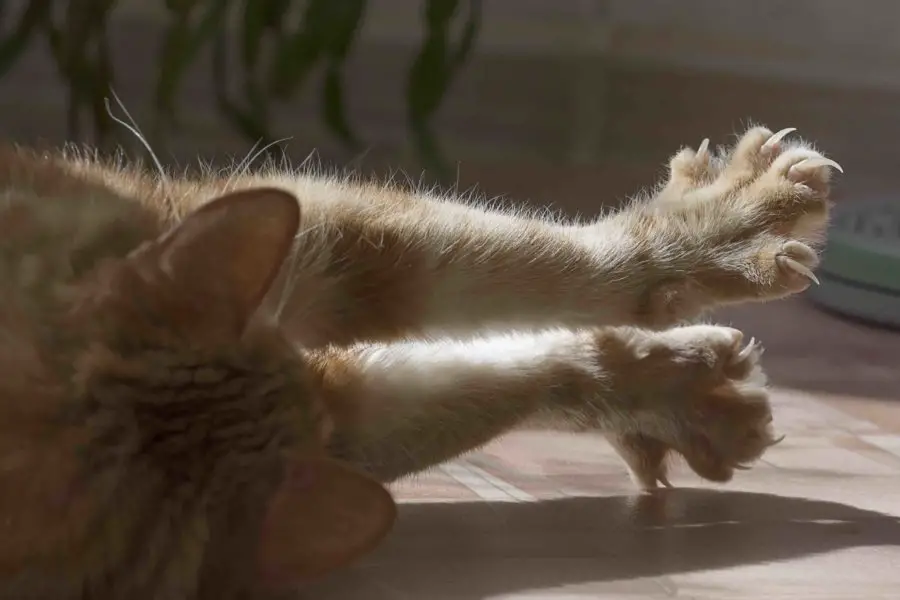Any cat owner will know just how challenging the task of cutting a cat’s nails can be. In fact we’ve all probably experienced at one time or another how the challenge was too much for just one person and we’ve had to call for backup, usually in the form of a less than enthusiastic partner.
It’s almost accepted that when caring for a cat we have to put up with their less than positive outlook on being groomed. But we really don’t think this has to be the case. Even just an extra pair of hands can help, however the process doesn’t always have to be so tricky.
Cats are adaptable. All it takes is some advanced planning and patience on your part to prepare them for having their nails clipped. Obviously it’s much easier to train your cat when they are young – but all cats can learn!
With the process of nail clipping in mind, we put together a list of our top three tips when it comes to trimming a cat’s nails. When we approach the grooming process differently using the following tips, we can make the experience a whole lot more enjoyable for both owners and their cats. And the good news is that you don’t need any special nail-trimming equipment or products.
Now when we say grooming process here we don’t mean it starting from the minute you sweep up your cat and go about maneuvering them into a position from which you can examine their paws and cut their nails. This process should begin at a much earlier stage in their life and that is where tip number one kicks us off…
Tip #1: Examine Your Cat’s Paws as a Kitten
We did warn you that we start the process of preparing a cat to be groomed at an early age and there’s no better time to start than when your adorable cat is still a kitten. By examining your kitten’s paws regularly you are not only getting them used to having their nails touched and handled but you can also ensure their paws are wound-free at the same time. If your cat is past the kitten stage, don’t worry. The process may just take more time and patience to get your kitty used to the process of nail trimming.
By making your cat feel comfortable having their paws examined your life will become a thousand times easier when it’s time to trim their nails. You will still encounter some resistance but not nearly as much as if you was to jump into the procedure straight off the bat.
We find the best way to examine a cat’s paws is have them lay on their back in your lap with their head near your knees. Not only will they be comfortable here but will also give you a great view of their paws and claws. Different positions work for different cats but we find this to be most effective position for the majority of cats we groom.
This practice will also allow you to become familiar with the anatomy of your cat’s claws. In general cats have 18 nails, 5 on each front paw and four on each rear foot. However it isn’t uncommon for a cat to have as many as eight nails on any given paw. This is known as being polydactyl and examining your cat closely will mean you know exactly how many nails you should be cutting.

Tip #2: Using Treats as a Reward
This is the oldest trick in the book but it is still vitally important when it comes to looking after a cat, especially getting them to do something they don’t really want to such as having their nails cut.
Using treats should be done so in moderation but rewarding your cat for behaving well while being groomed is a great way to get them to replicate the behavior in the future. This is extremely easy to do and you can reward your cat initially just for becoming more relaxed during the process and cooperating when it comes to being groomed.
If you have a slightly nervous cat, treats can be given when your cat first relaxes into a comfortable position on your lap or when you first begin to examine and pick up their paws. Rewarding them for remaining calm will only help your future grooming sessions.
Tip #3: Patience is Key but Don’t Take Too Long!
The third and final tip may sound contradictory but bear with us for a second. When it comes to first grooming your cat and specifically when trimming their nails, patience really is key.
Although we hope the tips given in this article will ultimately help make the process far more enjoyable you are likely to meet some resistance and it is important you remain patient with your pet during this time.
Have a time limit for your grooming sessions because it is highly unlikely your cat is going to want to sit perfectly still for 15 minutes while you cut their nails, no matter how well you have them trained.
It is very important not to rush the process and at the same time, you should look to be as efficient as possible. Ideally if you can get the job done before your cat has even had a moment to realize what is going on (very tricky we know) then you are most definitely winning.
Try out the tips above the next time you trim your cat’s nails. We hope they will improve the grooming sessions you have with your cat and strengthen your bond. Although you may struggle at first, we recommend sticking with the process and over time, as your cat becomes used to the techniques, you should find the process improving and your cat warming up to the sessions (and treats) as well.
Jenny Nolan is a professional groomer who when not working, can be found contributing to family run pet blog CleanerPaws.com with her mom, Sue.
This blog contains affiliate links. For more information about third-party advertising on this site, please click here.
Enjoyed this article? You might also enjoy Cat Nail Trimming: A Beginner’s Guide or learn about how AVMA Amends Declaw Policy
